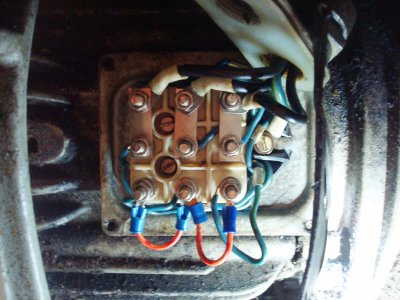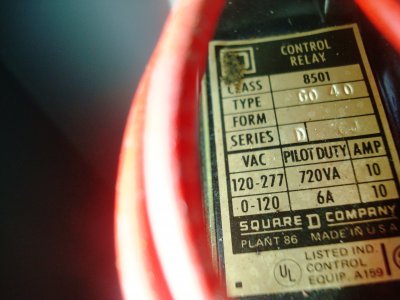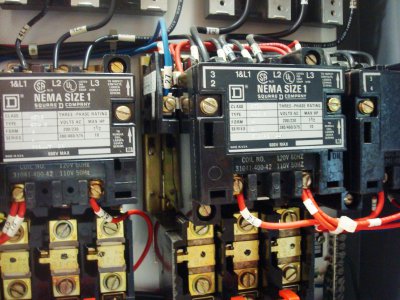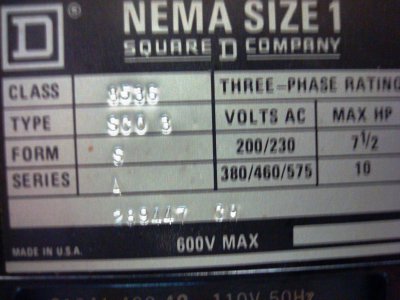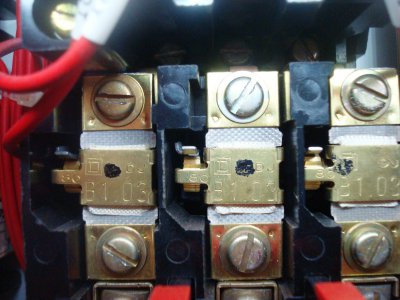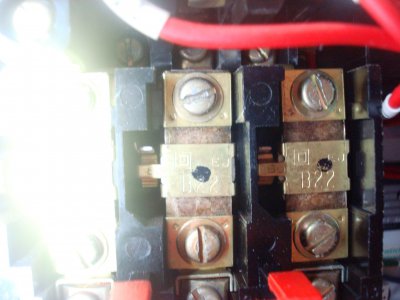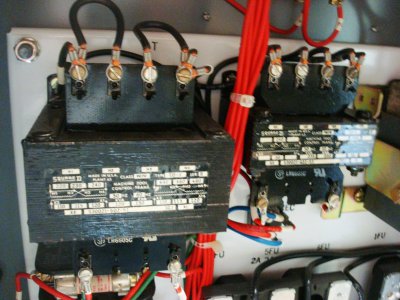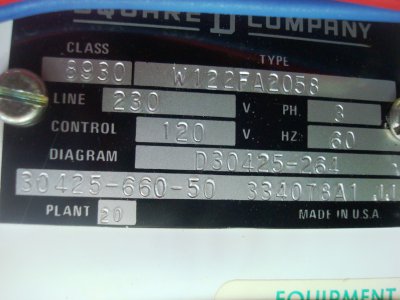Mr. Chuck;
Your Polish lathe is wired for 480 v or high voltage. The picture of the jumpers in the pecker head gives it away. Change to the alternate arrangement per the label which will give you a "Y" connection in parallel. The motor has two windings, each capable of dropping 240 volts across them. Wired in parallel, side by side, they each drop 240 volts and you read the amperage of each doing so so it is twice the amperage of the high voltage connection. Wired in series, as they are now, they are connected end to end. With each dropping 240 v, 240 v + 240 v = 480 v.
You will also have to change the heaters in the magnetic starter as they will (or should be) only capable of carrying the 1/2 the amperage necessary for a 240 v connection. If you do not change them your starter will trip out due to overload when there is none. The heaters are the gizmos held in by two screws just above where the motor leads leaving the panel are connected to the overload block. They are spring loaded so when they jump out and it clicks, don't be alarmed! Look in the phone book for Square D, call the supplier and give them the rating of the motor, (3 kw) they should at least tell you where you may purchase them. If you have a CED (Consolidated Electrical Distributors) in your town I would start there. They are nation wide and the local guys at least are great. Just no guarantees that branch house handles the Sq "D" brand.
Nice control panel. The magnetic starter on the lower right with two contactors and only one overload block is the reversing starter for the lathe drive motor. I have no idea what the left hand starter is for, coolant pump maybe? Also check the control transformers for the proper connection for the voltage supplied. Control transformers may also be wired for 240 or 480 volts.
The largest VFD I am aware of that will operate on 240 v single phase is 7 1/2 hp. The largest on 120 v single phase is indeed 3 hp. But go to your industrial supplier and ask. They come out with new stuff almost daily and you have to keep up with it. Or at least I used to when I was in the biz! VFD's do have timers that allow you to program start up and shut down times to reduce and control inrush current. The terminology is usually "ramp up" and "ramp down times". This is where inductive breaking enters the picture, by injecting current spikes into the motor if needed to control the stopping time. Else it just slows the frequency to zero at the rate set. These spikes are what break down motors that are non inverter duty rated. This is why they are so touchy about guarantees unless your motor is rated for such use. And if it is an older motor, it is not.
A lathe starting with nothing in the chuck (no load condition) should start and run regardless of what gear they are in. If they don't, you have a problem, as you know! Motors are hard to start and may draw up to or over ten times the nameplate data, but only for a short time. A motor, electrically speaking, is a dead short. Until the rotor starts to turn, creating counter electromotive force, the resistance in the windings is virtually nil. The slip in a motor is how much the rotor lags behind the sine wave in a 3 phase sine wave. This slip is due to bearing resistance and physical weight of the rotor itself, and the load imposed upon the motor. The farther it lags, the more current it draws and the less efficient it becomes. This lag from synchronicity speed is also what causes heat and poor power factor which messes with your rpc also. Basically creating watt-less un-measurable current that shows its self as heat, harmonics and other undesirable electrical noises. Humming, buzzing, rattling, etcetera.
Are you glad you ask?
Edit---Check your RPC also for proper voltage hook up. An added thought!
 )
)

